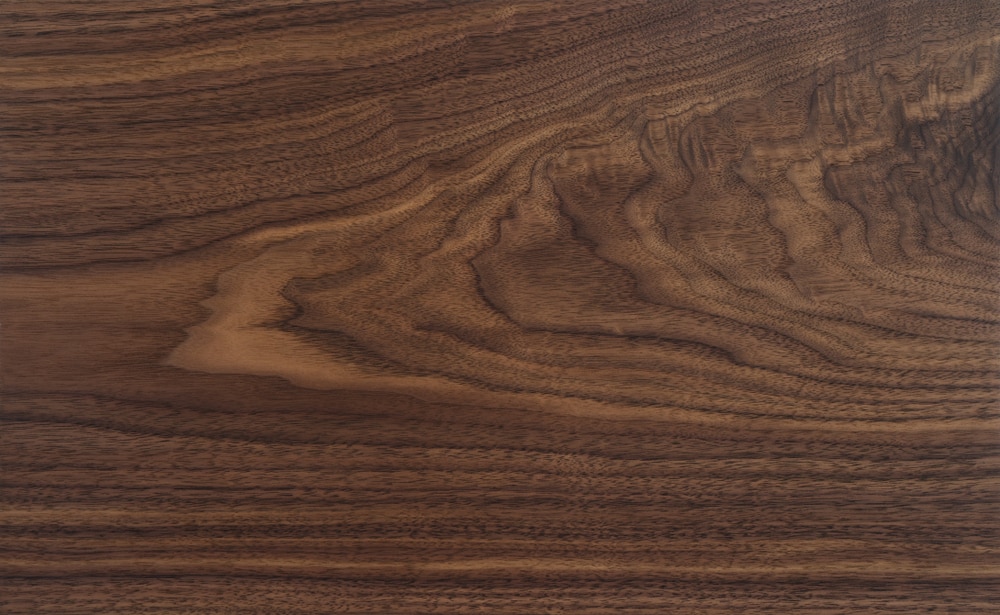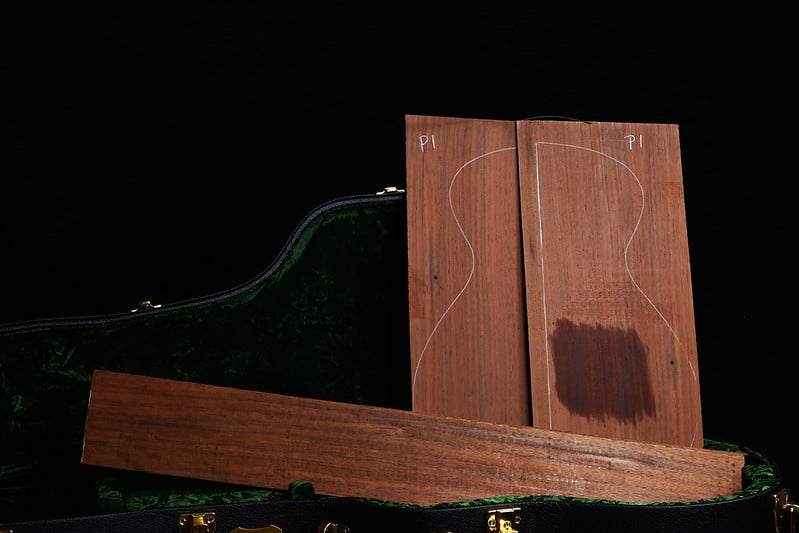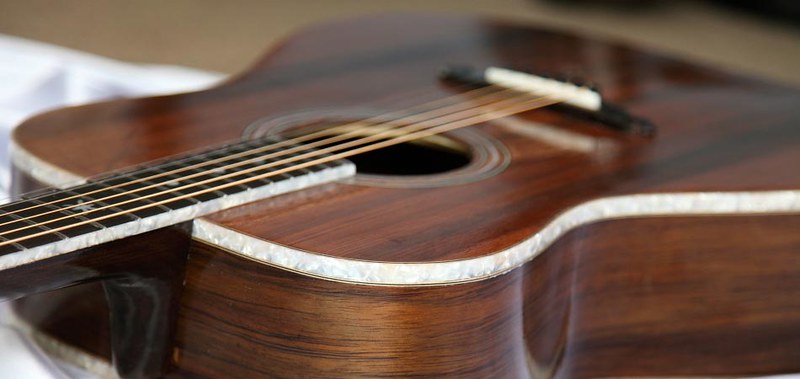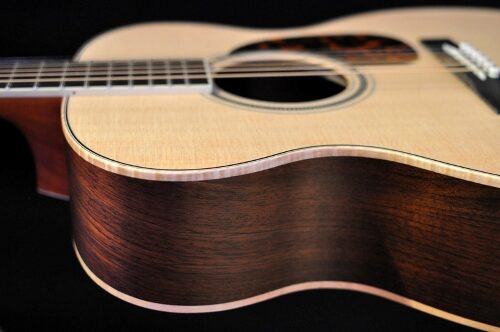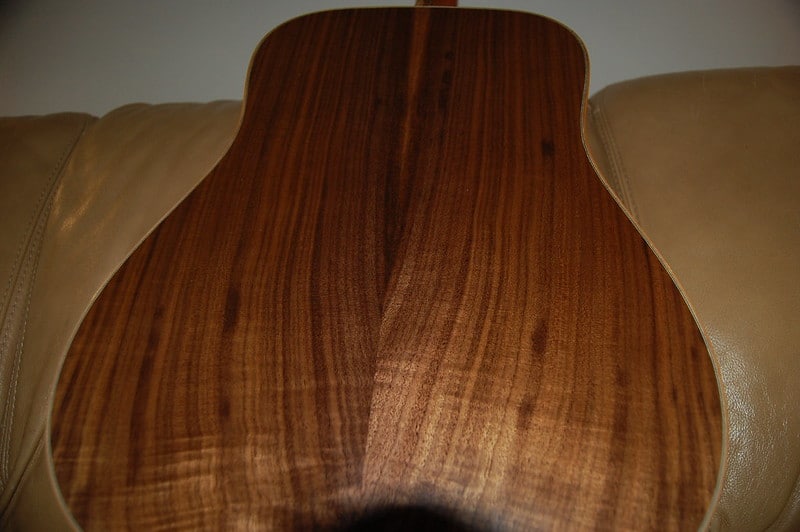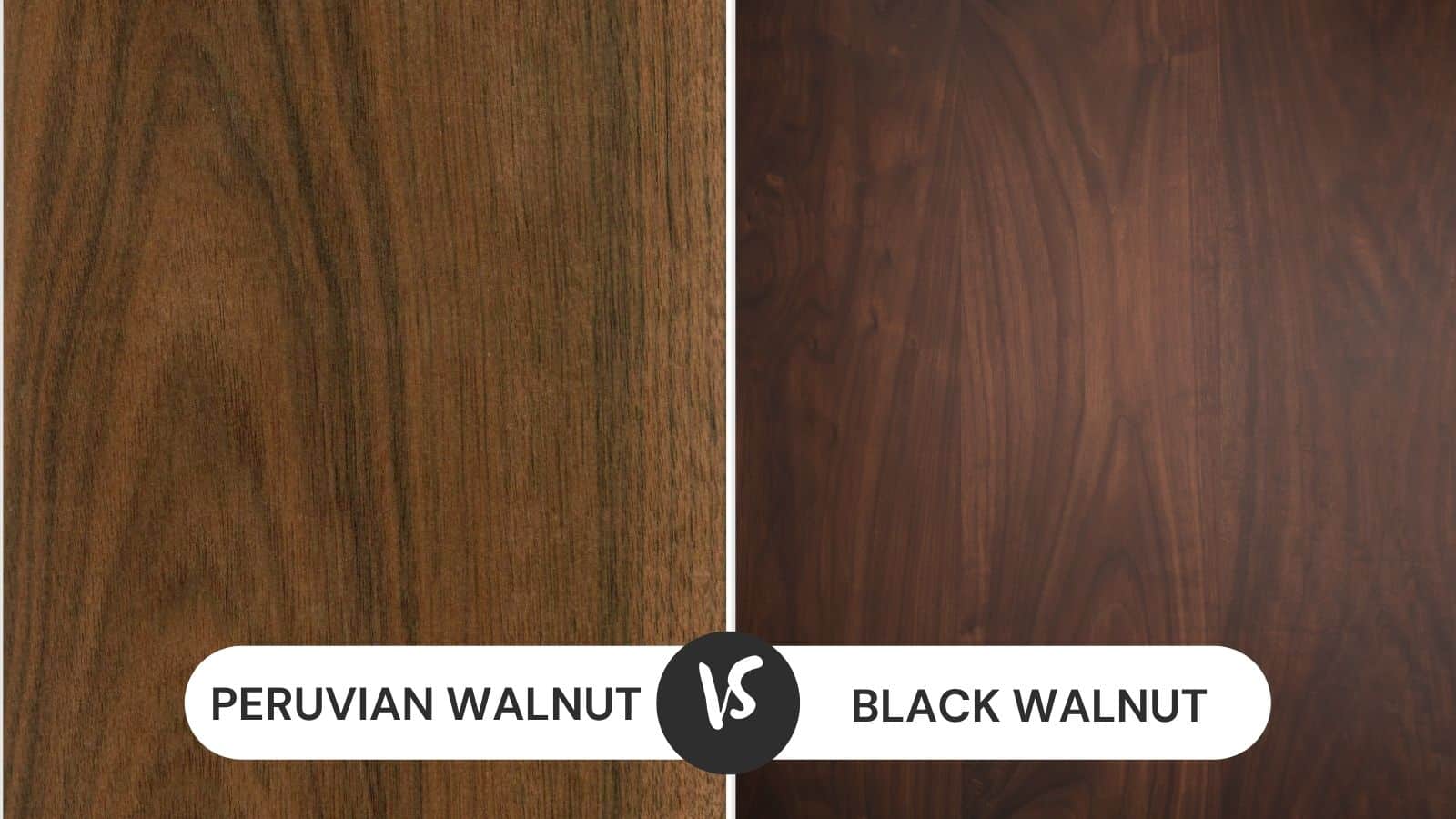
The wood that’s used on a guitar speaks a lot about the instrument itself. High quality instruments are generally made from more expensive wood, which is capable of withstanding the test of time, and the sound only gets better over time.
However, if you choose some cheap quality wood, don’t expect it to last as that long. With that being said, the wood type contributes towards the color, tone, stability, durability, grain, feel at the touch, and resonance on the acoustic guitars.
So, it is not only about how the guitar will look, and for how long it will last, but is also about how the instrument will sound, so there’s hardly any room for error when making such a decision.
Walnut is a flexible type of wood that is being used for some applications including making guitars.
Yet, there are also different types of walnut wood as well. Peruvian Walnut and Black Walnut are the two most common types of walnut wood that are being used for manufacturing guitars. A few important factors to know about these wood types are:
Comparing Peruvian Walnut vs Black Walnut
| Features | Peruvian Walnut | Black Walnut |
|---|---|---|
| Shade | Slightly darker | Slightly brighter |
| Grains | Generally straighter | Crooked |
| Texture | Coarse and porous | Smooth and non-porous |
Peruvian Walnut
Peruvian walnut is one of the most popular types of wood that is being used for guitar manufacturing and it is often the right choice since it has a slightly darker shade than the domestic walnut.
It has a chocolate-like texture on it so if you’re interested in buying an instrument that’s got a darker hue and looks a bit unique, then you can’t go wrong with this one.
Texture
The Peruvian walnut also has a straight grain texture that makes it pretty great for people who want wood that’s slightly different than the smooth textures you find in the market.
Think of it as a very unique type of wood that’s found in many parts of South America, including all the way to some parts of Mexico.
Coming to the performance features that you would like to have on the guitar, you will be having a slightly coarser feel on the wood.
It is also a bit more porous than the black walnut or any other walnut wooden type you could be using, which makes it a great choice for those deep and warm tones that most people prefer when playing rhythm guitar.
Ideal for Bass Guitars
That makes the Peruvian walnut the best choice to have for bass guitars and to play for all those genres that you might be playing such as folk, country, and more.
Peruvian walnut is also the best choice for you if you like to have a wooden texture and theme on your guitar, and are not looking to have your guitar painted.
All you will need to do is get it finished properly and that will be helping you out to get the optimal finish on your guitar.
If you’re looking for an instrument that’s relatively durable, but is still generally softer, you should absolutely consider the Peruvian walnut. The Janka rating of this is 960, so while it’s slightly softer than American walnut, it’s still going to hold its own over time.
If you’re thinking about outdoor use, you don’t have to worry about not taking out the Peruvian walnut. It’s still capable of resisting warping or decay, so you don’t have to worry about the wood losing shape.
However, if you want to make sure that the wood remains fresh, you’ll want to protect it, and that means you need to keep it away from high traffic areas.
The thing about Peruvian walnut is that because of the sudden rise in its popularity, it’s been harvested quite a bit.
Pricing
Guitars that are made from Peruvian walnut are generally more expensive, so you’ll have to look out for different options. There are some manufacturers that primarily use Peruvian walnut, but it’s not the popular ones like Gibson or Fender.
In fact, there are some special manufacturers and luthiers who create custom guitars that are made from Peruvian walnut.
It doesn’t have that uniform look so it’s a great choice for those who want a guitar that’s different-looking and one that’s especially designed for them.
For instance, Queen City Guitars is a great company that offers hand-built guitars which are made from Peruvian walnut. As you can imagine, these are not guitars that you’ll find from popular commercial manufacturers.
These are handbuilt instruments that are designed for a specific purpose. So, if you need a guitar that’s made from Peruvian walnut that’s ideal for specific rhythms, or playing the lead, or even fingerstyle, then Peruvian walnut might be what you need.
Black Walnut
Black Walnut is another type of wood that is used on guitars, and as the name tells you, it’s one of the darker woods out there.
The dark shade on this wood is incredibly gorgeous, and it has a dark chocolate-like feel to it, something that you won’t get with most other types of wood.
Yet, the overall finish goes without any issues and you are going to be able to play your instrument for years to come.
Durability
The overall durability and strength of this guitar are pretty great since it is a bit less dense and softer than the other guitar wood types that you might know about.
Not only that, but the resonance is also pretty great and that would allow you to play it for a wider range of genres since it’s relatively thick, and produces a rich, thick tone.
Texture and Color
Black walnut is generally quite rich and is dark, though you might expect some form of variation in color. It might be a shade of coffee, or it may have a purple tint, and in some cases, it might even have a shade of gray!
Apart from the difference in color, the black walnut wood is also known for its variety of grain patterns. The graining on black walnut is generally straight or thin, though in some cases, you might notice a bit of curling at times.
When we talk about the Janka rating black walnut has one quite high, ranking at 1010. Therefore, it’s widely considered as a hardwood by many. But, that doesn’t mean that it’s as hard as maple or oak, which are both widely used in guitars too.
Susceptibility to Decay or Warping
As a result, you will want to avoid playing your guitar in high-traffic areas, as it’s going to be quite susceptible to bumps and damage.
The black walnut is native to North America, found in parts of the United States, primarily the northern USA and many parts of Canada.
And, you don’t have to worry about decay or warping over time, so it’s great for use in the long run. It’s also incredibly receptive towards different finishes, so the even application is going to make your guitar look good.
Black walnut is widely available, and many consider it a sustainable resource, which is one of the reasons why it’s generally cheaper than Peruvian walnut.
However, when you compare it with other domestic types of wood, it’s still relatively expensive.
Which One’s The Better Pick?
When you’re comparing wood types, these are two popular options. However, depending on your needs, and more importantly, your budget, your choices are going to vary drastically.
That’s why it’s important to make sure that you compare your options and choose the right one.

